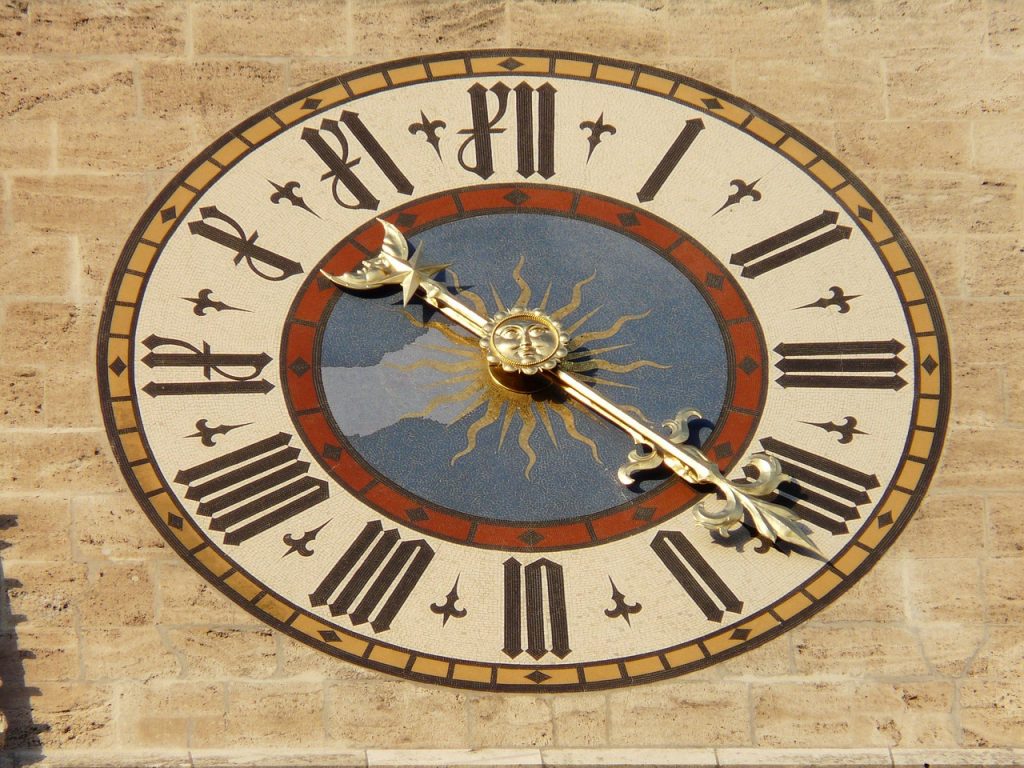Here is a bit more on the treadmill running – some further ideas on fiddling about with the timing and also what happens if you mess up your strategy.

Previously I spoke about how it helps to find ways to give qualities to the drab mathematical waypoints in your training. The idea was that you can attribute emotions to the different stages and give them meanings, colours and shapes. It tends to emerge over time in the training rather than being something that one can impose all at once.
Nine minutes left to get to the end or to a certain fixed point on the way has a different feel to when you get to eight minutes which has a whole different association. Seven feels like a special number with all its associations so perhaps troubles you less and six is leading you into the last five minutes. In my mind that is within touching distance of three minutes. That has a connection to my interval training (I do 800 yassos on somewhere between 3.15 and 3.45) so when I get there I know I’ll be able to say to myself that it’s just one of my short intervals left to run (to a certain extent the mind is shifted into thinking about those sessions and all the associations with them) . It removes that section from the otherwise slightly monotonous countdown of the last ten minutes. So when I’m at six minutes I can say that I just need to get down to five and then it’s a short hop into that kind of empty or free zone. It’s almost as if you only need to focus on getting to those last three minutes and then somehow that end bit will take care of itself without any thought or physical input from you.
Longer distances left to go might either have some of their own special connections or else I would still do some of the above. For 19 minutes remaining I might do something similar to the above putting all my attention on getting down to having only ten minutes remaining. Whilst working on those nine minutes (from 19 to ten), I would consciously try not to think of the extra chunk required at the end (the ten minutes) or else would somehow make it seem like a little extra piece to be added (somehow if you’ve just done a fairly long run, and you tell yourself you are into the last mile, it can seem quite doable – so I could almost look forward to that extra block of 10 minutes knowing that it was the final little section that was coming up before finishing. The mind has to hold on to it by its very nature but instead of holding on to the idea of 10 rather non-descript and slightly painful minutes, with some work it can be conceived of as a small chunk of time and stored more in the periphery.

Or it may be the last ten minutes remaining to get you to a certain point (perhaps one that you’ve set up with these strategies) – for me it might be that last section up to where the treadmill resets after an hour (see here).
It may well be that you can get through quite a bit of the training without these things but if you can develop them and work on them, then they are ready to be deployed when you might most need them, towards the end of a hard event for example. I think part of the training is this very process – it’s not just a physical thing but also figuring out these connections and having them ready to use when you need them.
Last time I described how the treadmill clock counted down from 60 minutes and how that then translated into a clockface in my mind’s eye which had various key parts or stepping stones – mainly the points where it changed from say 50 minutes something to 40 something and so on. The treadmill I used for a few years had this kind of timer built in so was what I had become accustomed to. There is nothing particularly unusual about this – it’s not a great deal different from looking at the time and then continuing with an activity and having an idea in your mind about how much time has elapsed. With the training you are perhaps monitoring this passage of time in your head more continually and precisely. An example might be a musician concentrating on all sorts of aspects of the music and his or her technique whilst still counting away the beat in the background.1
The treadmill I currently use counts up from zero. However, as soon as it starts I’m translating that directly into the countdown timer in my head. What I mean is that as I see, for example 3 minutes in front of me on the clock, then I’m seeing the clockface in my mind’s eye (from the old treadmill) at the 57 point. Likewise, say when it gets to 11 minutes then I’m seeing 49 minutes on my clockface. I’ve spoken quite a bit about how we have to find ways to escape from this rather dull mechanistic time that is very slowly ticking away in front of us and of how we can use visualisations, shapes and patterns. What seemed curious to me was that the old countdown was exactly this – the kind of boring time that I needed to escape from in order to get longer distances done. Why was I now visualising it and using this to help me escape from the new one that was counting up the way rather than down? I think a possible explanation is that as soon as one moves away from the dry monotonous thing in front of us and we use our imagination or inner thought processes to translate it into another form, at that point we rob it a tiny bit of its dominion over us. One part of my mind (at the times that I look at the real clock) is aware precisely of the number it is showing but at the same time I’m not letting that take over as the main focus of my attention. Because I’m using my mental energy to translate it into a kind of mirror image I’m not really processing it in the same way. I’m looking at it without really taking it in. I wonder if an interpreter might do something similar in listening to one language and then somewhat automatically (if they are very skilled) translating it into another, without really having time to think about the meaning of it.
The main focus of my attention is on this other clock which is ticking down the way, what is in fact now a ‘fictitious’ clock as it is imagined. As investigated elsewhere it seems that these tiny shifts are what can help us hugely in tackling challenging distances and spans of time.
As I translate the time over on to the imaginary clock I can do quite a bit of rounding up and down and rejigging of the time. To give a concrete example of this let’s imagine the actual counter is showing 15 minutes and 5 seconds. I translate this over into the clock in my head and initially see 45 as that is 60 minutes less the 15 minutes. Then I start to think a bit more about it and see that the fact that the 15 minute point has actually been passed (even if that is only by one second) means we are into 44 minutes and something on the inner clock. This seems to be creating yet more fertile ground for some slight dismantling of the rigidity of the passage of time.

There is less of a shock since by shifting things over to my own ‘personal’ clock I take away some of the force from the impersonal clock counting up the way. I might not have looked at it all that time and be hoping it was closer to 20 minutes, for example, only to find it’s only just passed 15 minutes. Also and more importantly, once I think 44 minutes, as well as being able to say to myself that I’ve done 16 minutes and not 15, I immediately think that any moment it will be 43 which in turn is touching distance away from 42. For me that is very close to being down into the 30s (see here). That then seems to lead me into this feeling of being close to getting down to the bottom of the clock face and how that last bit is so much easier. It may seem a big stretch of the imagination but on some level this slight alternative scenario has been built up where, instead of being rigidly at the 15 minute point (on the official treadmill counter in front of me) and having a very cut and dried 45 minutes remaining, I am fast getting to the easier final ‘downhill’ part of the session (the last 30 minutes).
There seems to be a layering of small fictions one on top of another. It starts with exaggerating the official 15 minute and 5 seconds into being more like 15 minutes and 59 seconds so that I can say to myself we are into 43 minutes remaining (to the calculating mind that seems insignificant enough to be allowed to pass the mind’s censor). From there one can add other optimistic thoughts that one is nearing the point where there is 30 minutes and something remaining (of course the ‘something’ is actually 9 minutes and 59 seconds but one doesn’t dwell too long on each fictitious stepping stone). Once one is out of the territory of the outer non-imaginary time it become easier to distort and blur things. The mind will only let the tiniest discrepancies through the net but once into the more imaginative world it’s as if anything is possible suddenly. It’s just a question of getting across that little bridge between the two states of mind or at least opening it up. There will likely be some crossing back and forth but the important thing will be to keep it open so as not to lose enthusiasm.
Having a kind of reflection of the real clock in your mind’s eye means that I see, for example 18 and deduct 18 on my imagined clock and get 42 but it’s never exactly that or else for too short a time to let the mind catch hold of it (and the calculating mind knows this and is happy with it). It’s immediately going to be into the 41 and something zone. The mind doesn’t quite have the energy to keep making the calculation beyond the minutes which puts it into this slightly confused area. Although it is not much, for some reason it’s this slight blurring of the mechanical countdown that really helps and seems to set the scene for you to come up with much more elaborate kinds of ‘distortion’.
Coming back to the pink elephant – the thing we are trying not to think about (see here); you can’t stop the mind from latching on to it but now the pink elephant is dispatched to the periphery – it’s in a drawer in a piece of furniture in the room rather than being right in front of the mind in the centre of the room. We will consciously have to take some steps to get to it. If you decide not to look at the clock on the treadmill, it’s funny just how hard it is to stop yourself doing it. Physically it is not that difficult, yet there is a rebellious part of the mind that just wants to have a quick peak out of the corner of your eye. It may be a bit like having to touch wet paint to see if it is really wet when we see a warning sign next to it.

On top of this it’s also likely that I might further fiddle with things by stopping the treadmill at a certain mileage and restarting. If I had planned nine miles at 10 minute pace the challenge would be somehow to stop the mind worrying about a whole 90 minutes of running. I might start out and then after two or three miles just stop and restart, meaning there was perhaps only an hour left on the treadmill, or more likely I would start planning to stop at the three mile point but then might continue another half mile. Then restarting, and still visualising things as above, it would be less than an hour remaining. The mind has to take a few steps to work out what is remaining and suddenly just being in the one hour countdown takes the whole pressure off the original nine mile run.
Generally the more complicated and confusing you can make it for the mind so much the better. Somewhere you will have a record of the exact time run, perhaps on your watch or from knowing the exact time you started from a clock or even adding everything up on your watch depending on how you have been using it.
When you mess up your strategy
This is a little addition to what I described above in the first treadmill article (see here). This morning I was merrily doing what I described there but, when it came to that part where I have to restart the treadmill and do another seven minutes to get to eight miles, I forgot and overshot the stopping point (53 minutes on the countdown timer). This is no bad thing as at least it shows the mind is not desperate to stop. You can really turn it to your advantage. One can just keep running and adjust the strategy. The key to these strategies is in a sense that they are not too rigid as that’s precisely what we are trying to get away from. In fact as one tries to describe them in detail there is the possibility that they will become just as mechanistic as the dull time that is ticking away. So overshooting is a good thing and a sign that the mind is calm and not overly perturbed by that subgoal.
It’s also great if you further adjust a plan that you have already devised to trick the mind a bit. There is a fractal nature to these more imagined scenarios which lends itself to being broken up into smaller pieces. Each part requires its own focus and further takes the tricky mind out of its rigid state (see here). In a way any plan becomes rigid after some time, so if there is a further way to make things easier on yourself then it can never be a bad thing. Here the very fact that to get another 8 miles you are going to repeat the same ruse may well not work so well. The mind is on to you and in a sense some of the magic has been used up – the surprise spontaneous element where you took yourself out of the rigid prospect of having to run for 8 miles. Having said that I think the strategy may still have power in it for future use, rather like when the child knows how the trick is done but still gets joy from seeing it again or indeed hearing the same joke again can still be funny for some reason.

Coming back to the overshooting or messing up on this ‘planned’ strategy that one is adopting to make things easier on oneself, my initial thought was to continue and do the final two miles (miles 17 and 18) plus the extra seven minutes of the second eight mile section. (this key idea is discussed in more detail here). For the mind that would just leave the hour treadmill session (plus the warmdown five minutes that clicks in at the end) – something I felt I could get my head around. Also the exact distance up to that point is unclear and would require some mental calculation. You know you are in the region of 9 miles but don’t know exactly where (that’s excellent news and really half the battle). Interestingly at the point where you are thinking this through and coming up with a pretty persuasive argument for your mind that you only have an hour left, in reality you have almost 10 more miles to go (you’ve only just gone past that extra seven minutes to make up the first eight miles). I spoke about how this often seems to happen here.
In this scenario, having completed those parts that would normally have come later (miles 17 and 18 etc), instead of then restarting the treadmill for a final hour I kept going . This is adding ever further layers to the confusion to slowly wear the calculating mind out. One is in the flow and although it’s a fairly easy calculation to see how far you’ve gone it does take quite a few steps and it is really much easier to stop the mind looking at it. You have the luxury of knowing you can stop at any time and restart – all the time you are eating away at that final hour.
- This reminds me of an anecdote a friend recounted about a well known Indian tabla player who he and some other friends once ended up entertaining for an evening. The tabla player spoke of how during the performances there is a non-stop rhythmical counting of the beat in the head or felt through the body. He explained how, even at that moment later in the day whilst out chatting in a restaurant, he knew exactly where he was in a seven beat cycle. ↩︎
